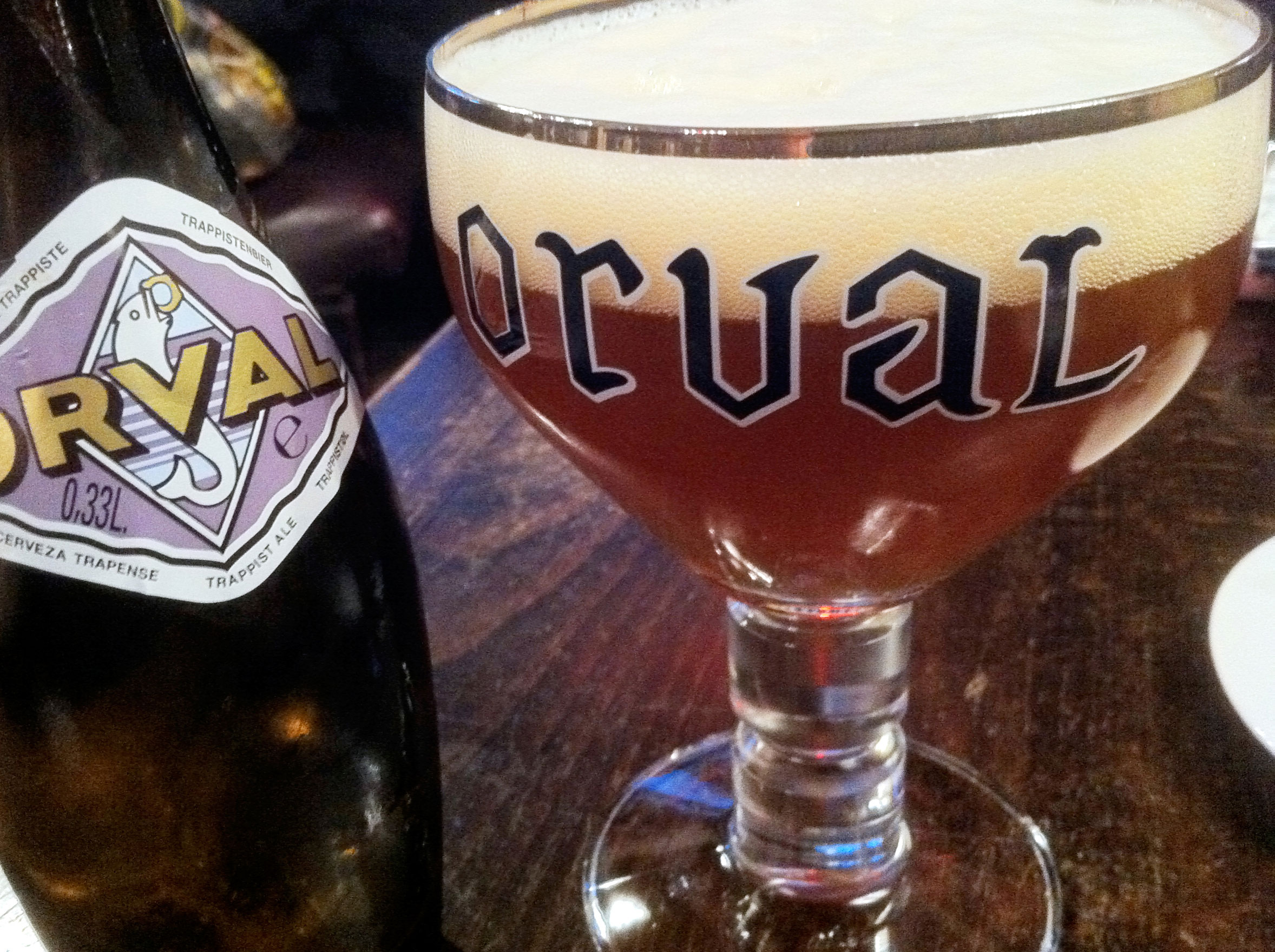
The Orval Case
Its name is famous. Its bottle, in the shape of a skittle, is famous. Its taste, highly distinctive, is famous. Let us not beat around the bush: we are talking about a beer whose very name gets many aficionados salivating.
The Orval Brewery is located within the walls of the Abbaye Notre-Dame d’Orval (province of Luxembourg, Belgium), founded by seven monks in 1132. A legend gave it its name: Mathilda of Tuscany, the story goes, lost her wedding ring in a spring. Then a trout appeared with the ring in its mouth. The widow is said to have exclaimed: “This place is a Golden Valley” (“Val d’Or,” which became Orval); hence the presence of the symbol on the bottle and the glass.
But back to the beer… It’s one of the ten authentic Trappist beers now recognized, and the only beer brewed in the Abbey. It is, “in my view, the only truly dry Trappist beer,” said Michael Jackson. BeerAdvocate and Ratebeer, respectively, give it 94 and 99, which speaks for itself.
According to the brewery, its raw materials are “spring water, two-row malting spring barley, aromatic hops and liquid candy sugar.” On this simple basis, these monks have created a unique, exceptional beer. Know-how, of course, but also the dry-hopping process, play their part.
It’s the only Trappist beer with characteristics of Brettanomyces – a kind of yeast unwanted in wine but welcome in beer for its leathery taste and acid smell. Unlike many others, the Orval brewers inoculate their beer with Brettanomyces at bottling, creating a secondary fermentation in the bottle. Many top-fermented beers change with age, but none change quite like Orval. Young Orvals are characterized by a fresh, hoppy bouquet and a hard bitterness. After 9 months, Orval undergoes a complete change, really starting to shine with caramel malty flavours.
Orval is an isolated case. You can say it’s nice, great, wonderful, gorgeous, but it remains an Orval most of all. Strongly recommended to beer fans.
